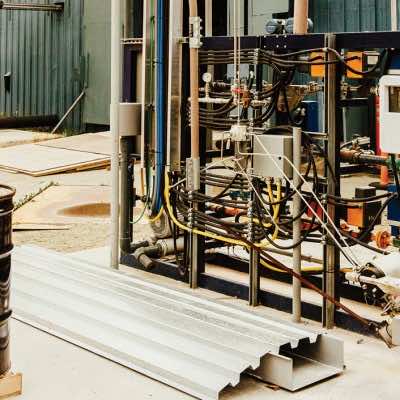Industrial pumps are created for usage in demanding or hostile environments. They transport a variety of materials, including food, water, chemicals, oil, sludge, wastewater, and slurries. High-pressure industrial pumps are offered in a wide range of sizes, styles, and functionalities. Pumps are essential for efficient operations and play a vital part in the production process. To choose the high-efficiency pump that is perfect for your needs, you must have a complete understanding of all industrial pump parts.
Uses of Industrial Pumps
In general, the pump may run on a variety of power sources, including electricity, labor, or wind power. These power sources can take the form of various pieces of equipment, ranging in various sizes from a small industrial pump used to transport coolant in machinery to a huge industrial pump utilized in a water supply system.
When being used for pumping, such types of industrial pumps need to be corrosion-resistant. Pumping water from wells, ponds, and aquarium filtration duties, fuel injection and water cooling in the automobile industry, and gas and oil activities in the energy sector are just a few of the many pumping uses for industrial pumps. In the biological process of creating and producing pharmaceuticals, pumps are used.
Pump Types and Their Applications
Dynamic and positive displacements are two broad categories of industrial pumps. No matter how fast the fluid is traveling as it enters the input valve, positive displacement pumps control it by moving at an equal pace. Dynamic pumps, on the other hand, increase the fluid’s kinetic energy by increasing its speed; this energy then transforms into pressure at the output point where the fluid has slowed. Each category includes several distinct kinds of pumps, including:
· Centrifugal pump
A centrifugal pump is a dynamic pump that is most frequently used in generating suction using one or more rotating impellers.
- Rotational pumps
This is a positive displacement pump that relies on a piston that pushes into and out of the fluid to generate suction
- Rotating pumps
The high discharge pressure produced by rotary pumps’ two gears meshing together drives the fluid flow.
What to Keep in Mind
Occasionally, industrial pumps are not entirely functional when you initially receive them. While you can purchase different pumps from your provider, you can’t just install these pumps in a system and expect them to work perfectly right away.
You will be required to do all installation procedures by yourself when your new industrial pump is delivered. These include straightening the driver, confirming its position after installation, adding grease or oil to the bearings, and bringing them into line with the driver again.
Additionally, you cannot pump in reverse to change the liquid flow through your pump. If you place the pump backward, the liquid may still move in the suction nozzle and depart via the ejection nozzle, albeit with less efficiency. In certain pumps, running back can result in the impeller becoming loose and getting caught in the covering.
When checking an industrial pump, suction, the actual pump, and downstream should always be taken into consideration independently. If problems arise, always inspect the suction portion of your industrial pump first because this is where several operational difficulties arise.


